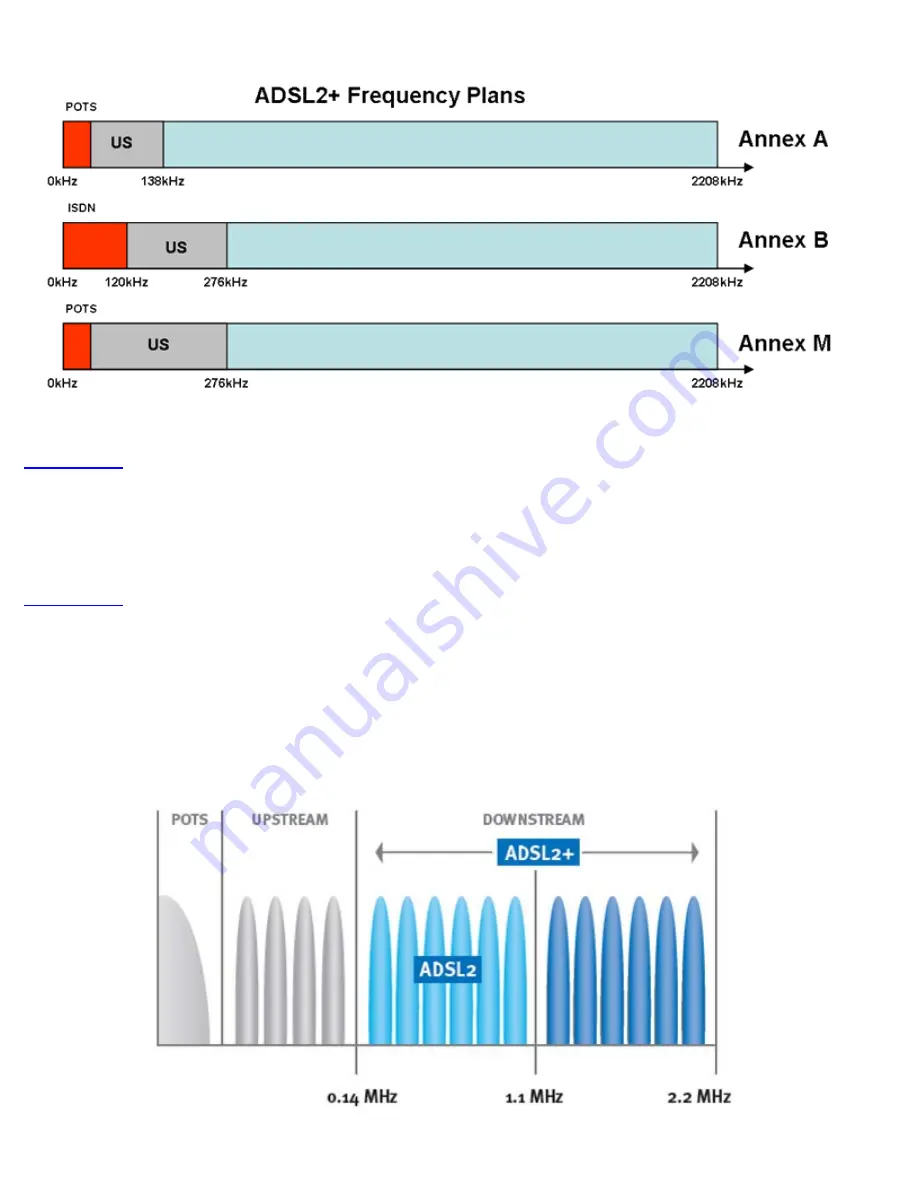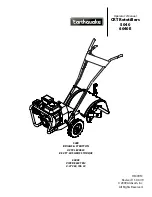
138-2208 kHz is for Downstream data (ADSL2+)
ADSL2+ Frequency Plans
G.Lite:
Enables G.Lite mode.
A lower data rate version of G.DMT and T1.413 also known as Splitterless ADSL i.e. it uses the same DMT modulation scheme but
eliminates the POTS splitter at the customer premises. As a result, the ADSL signal is carried over all of the house wiring which
results in lower available bandwidth due to greater noise impairments. Initially deployed in 1999 to reduce truck rolls which were
needed to install the splitter at the customer premises.
ADSL2:
Enables ADSL2 mode.
Also known as ITU-T G.992.3, the standard extends basic ADSL data rates to 12 Mbit/s downstream and 3.5 Mbit/s upstream
however actual speeds are dependent on line quality - the most significant factor being loop length.
ADSL2+:
Enables ADSL2+ mode.
Also known as ITU-T G.992.5, the standard extends the capability of basic ADSL by doubling the number of downstream tones
providing data rates as high as 24 Mbit/s downstream and 1 Mbit/s upstream depending on loop length. ADSL2+ can also be used
to reduce crosstalk because it provides the capability to use only tones between 1.1 MHz and 2.2 MHz thus masking the
downstream frequencies below 1.1 MHz and associated interference - this is also referred to as Spectral Masking.
BX100A/V e-Manual D07-00-001 Rev E01
Page 13 of 52














































